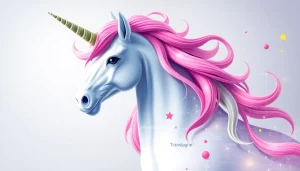10 Fascinating Public Domain Films You Should Watch Today
Understanding Public Domain Films
The term public domain films refers to movies that are no longer protected by copyright and can be freely used by anyone. This lack of copyright protection can arise for several reasons, including the expiration of copyright terms or failures in copyright registration. Understanding public domain films not only enhances our appreciation of cinema’s rich history but also opens up opportunities for creativity and adaptation without fear of legal repercussions.
What are Public Domain Films?
Public domain films are distinguished by their lack of copyright constraints. Generally, once a film’s copyright expires, it enters the public domain, which allows anyone to view, copy, distribute, or create derivative works based on it without seeking permission or paying royalties. The criteria for what constitutes a public domain film vary by country; however, in the United States, any film produced before 1928 is considered public domain as of 2023.
The History Behind Public Domain
The history of public domain films is intertwined with the evolution of copyright law. Originally, copyright laws were enacted to incentivize creativity by providing creators exclusive rights to their works for a limited time. However, as time passed, the need for cultural and historical works to be accessible for public enjoyment became evident. The passage of the Copyright Term Extension Act (CTEA) in 1998 extended the duration of copyrights, delaying the entry of many films into the public domain. Consequently, many classics remain legally protected, but the date for a wide range of films is steadily approaching, allowing them to become accessible to all.
Benefits of Watching Public Domain Films
There are numerous benefits to watching public domain films:
- Cultural Enlightenment: Public domain films often include influential works that shaped cinematic art, offering viewers insight into filmmaking’s evolution.
- Cost-Effectiveness: As these films are available for free, viewers can enjoy a vast library without the burden of purchase or rental fees.
- Creative Freedom: Artists and filmmakers can repurpose public domain films for modern expressions and new projects without legal complexities.
Top Public Domain Films to Enjoy
With countless public domain films available, certain titles have persisted through the decades, garnering cult status and critical acclaim. Below, we explore a variety of genres represented among these timeless classics.
Classic Comedies in the Public Domain
Classic comedies are a delightful part of public domain collections. Sister Acts and outrageous capers helped define a significant era in film. Notable titles include:
- It’s a Gift (1934): Starring W.C. Fields, this comedy showcases his trademark humor with wit and slapstick antics revolving around the absurdities of daily life.
- The Great Train Robbery (1903): Often regarded as the very first narrative film, its influential style and narrative simplicity laid the groundwork for future comedic storytelling in cinema.
- Arsenic and Old Lace (1944): This dark comedy, featuring Cary Grant, revolves around a man uncovering the sinister secrets of his beloved aunts, delivering a unique combination of humor and suspense.
Legendary Dramas to Experience
Public domain dramas often capture intense emotions and storytelling intricacies that can resonate across generations. Some must-watch films include:
- The Birth of a Nation (1915): While controversial, this film marks a pivotal moment in narrative cinema and historical storytelling, known for its revolutionary use of camera techniques.
- The Phantom of the Opera (1925): A silent film classic that combines romance, horror, and melodrama, showcasing iconic performances and remarkable cinematography.
- Night of the Living Dead (1968): This early horror masterpiece not only introduced zombie apocalypse filmmaking but also subtextually examined societal issues that remain relevant today.
Animated Gems for All Ages
Public domain films also include animated classics that captivate audiences of all ages. Highlighted here are some beloved animated choices:
- Betty Boop: Mysterious Mose (1932): Featuring the iconic character Betty Boop, this delightful short encapsulates the charm of early animation with its quirky humor.
- Gulliver’s Travels (1939): This adaptation from the famous novel reveals early animation capabilities and whimsical storytelling that appeals to children and adults alike.
- Snow White and the Seven Dwarfs (1937): While the original version by Disney is not in the public domain, various adaptations and derivative versions have made their way into this category.
How to Identify Public Domain Status
Determining whether a film qualifies for public domain status can be tricky, but a few guidelines and resources can make this process more manageable.
Copyright Laws Explained
The Copyright Act governs how long works are protected. In the U.S., the length of copyright protection has changed over time:
- Works created before 1923 are public domain.
- For works published after 1977, copyrights last for 70 years post the author’s death. If the author is unknown, the duration is 95 years from publication.
- For films created between 1923 and 1978, if published with a copyright notice but not renewed, the work becomes public domain.
Resources for Checking Public Domain Films
Several resources can help verify whether a film is in the public domain. Key resources include:
- Wikipedia’s List of Films in the Public Domain – A comprehensive resource cataloging notable films.
- The U.S. Copyright Office – Offers guidelines and FAQs on copyright status and licensing.
- The Internet Archive – A digital library offering access to public domain films for streaming and download.
Common Myths About Public Domain
Understanding public domain films involves debunking several myths. Here are a few common misconceptions:
- All Old Films are Public Domain: Not every old film is in the public domain. Various factors determine eligibility, including original copyrights and renewals.
- Public Domain Means Free to Alter: While public domain works can be copied or reused, some alterations may still breach the moral rights of creators if the original work is still identifiable.
- You Can’t Profit from Public Domain Works: Creators can create new adaptations or original content based on public domain works and profit from them, as long as they create something new.
Where to Watch Public Domain Films
With the wealth of public domain films available, knowing where to access them can maximize your viewing experience. Here are some of the top recommendations:
Online Platforms Offering Public Domain Films
Several online services provide extensive libraries of public domain films, often free of charge:
- The Internet Archive: A treasure trove for free films, music, and books, where thousands of public domain films can be streamed or downloaded.
- Public Domain Torrents: This site allows you to download public domain films for free in various formats, ideal for offline viewing.
- Archive.org: Another excellent platform for accessing a large repository of public domain films, documentaries, and newsreels.
Community Screenings and Events
If you’re fond of meeting fellow film lovers, consider attending community screenings of public domain films. Many libraries, universities, and cultural institutions host regular film nights dedicated to classic cinema, offering a unique atmosphere to appreciate films together.
Creating Your Own Public Domain Film Festival
For enthusiasts eager to bring communities together, organizing a public domain film festival can be a fun and rewarding project. Here are some steps to create one:
- Curate a list of engaging public domain films to showcase.
- Secure a venue—consider local theaters, parks or schools.
- Promote your festival through social media, local newspapers, and community boards.
- Engage audiences with discussions or Q&A sessions post-screening to deepen understanding and appreciation of the films.
The Future of Public Domain Films
The landscape of public domain films is continually evolving alongside advancements in technology and shifts in cultural attitudes. Here’s a look at what the future may hold:
Technological Advances in Film Sharing
With the rise of streaming platforms and social media, public domain films are becoming more accessible than ever. Innovative technologies allow for easier distribution, making it possible for audiences worldwide to enjoy and share these classic films.
Preserving Cinematic History
As new films enter the public domain, efforts are likely to increase in the preservation of this cinematic history. Organizations committed to archiving and standardizing these films for future generations will play a crucial role in ensuring that cultural legacies remain intact.
What’s Next for Public Domain Films?
The future of public domain films points towards a growing recognition of their importance not only as artistic works but also as educational resources. As more films become accessible, discussions surrounding copyright, accessibility, and cultural heritage will likely become more prominent, emphasizing the need for balance between creator rights and public access.














Post Comment